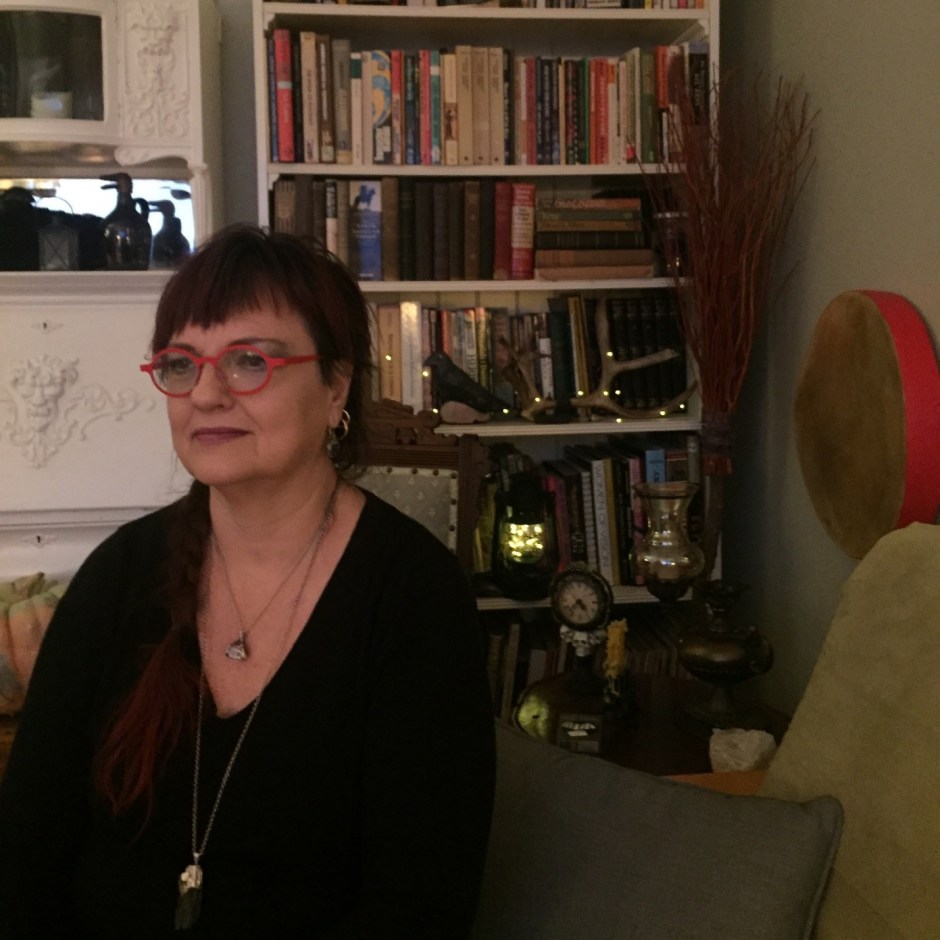SOME TORONTO FEMALE UNIVERSITY STUDENTS TURN TO ESCORTING TO PAY FOR THEIR EDUCATION.
By Anastasiya Ivanova | Featured image courtesy of Pixabay | Updated January 7, 2020
On a March afternoon, Rosie* greets a 35- year-old Russian man at the door of the two-bedroom condo in downtown Toronto where she works. “Milan” hands the 24-year-old Ryerson University student a cup of tea and a single red rose. Every Friday, he brings her tea and flowers. They kiss before he sneaks into the master-bedroom shower and Rosie positions herself on the queen-sized bed, waiting. She takes off the blanket-like patterned scarf, letting the ends of her curly black hair brush her shoulders. Without the scarf, she is half naked: her plain grey underwear contrasts against her olive skin and shapes perfectly her slim body.
After “Milan” exists the shower, for the next half an hour they have sex. For the remaining half an hour, they cuddle, talking about the strangely warm March weather, politics, and Rosie’s school.
When their time is up, Rosie watches Milan get dressed. As soon as the door behind him closes, her eyes search for the $320 he left for her on the kitchen countertop. She retrieves her phone and types “He’s gone,” to Carolyn, her manager. Then she heads to the shower. Her next client is on his way.
Rosie has been working as an escort at Sassy Angels, one of Toronto’s prominent “incall” agencies, since 2016 when she first enrolled in psychology at Ryerson University. No one knows exactly how many Rosies there are out there, but Rosie and four escort agency managers say this student/escort phenomenon is common. (A colleague of hers at the agency, a student at York University, didn’t wish to come forward for this piece. She was afraid I would recognize her on Keele campus.) But Rosie is brave enough to battle the stigma of such a double life that silences many girls like her.
“[Escorting] is not for everyone. Many girls in the agencies do it because they want to, not because they are forced.”
It’s a mid-morning Thursday in March. Rosie smiles into her paper coffee cup at the Second Cup at Yorkdale Mall. She looks like any other freshman enthusiastic about the future: ponytail, light lipstick, black-framed glasses, pink dress shirt, and dark jeans.
“Last semester my GPA was 3.9, so I am doing fairly well in school,” she says. “I also work two jobs: my escort job and another one at a delivery company.”
But with that job, even when she worked full-time, she found she couldn’t afford her tuition and the downtown cost of living. She could have applied for OSAP. But after graduation, she would have to spend years to pay off her debt, which she compares to a down payment on a house she wants to buy one day.
But Sassy Angels isn’t her first time as an escort. At age 18, straight out of high school, Rosie began working as an independent escort in Toronto.
“While I was in high school, I always saw these girls with expensive bags and shoes. Even if they wore sweatpants and their hair was in a messy bun, they still had perfect makeup,” she recalls. “Everyone knew what they did. They didn’t have the money for all this stuff. So, I wanted to try it out, as well.”
Rosie found work through websites like xfinder.ca and Toronto.backpage.ca. She posted photos of herself under a nickname and described the services she provided.
“I didn’t like it because I quickly grew tired,” she reflects. “I had to spend a lot of time marketing myself and screening clients.” But the way out came when at the age of 20, Rosie was diagnosed with Lupus. She spent the next four years taking care of her health.
In 2016, Rosie decided to return to escorting, but this time she didn’t want to be her own manager. So, she began working for Sassy Angels.
“I went into this for a purpose: to provide for my education,” she says. “I know I will not do this forever.”
There are about 35 well-established “incall” escort agencies in Toronto. Incall means clients visit the escorts for services at properties rented by the escort agency, usually during the late morning until early evening. This differs from “outcall” agencies, where escorts provide services to the clients at the clients’ locations during the late evening and at night. The agencies say they follow ground rules to ensure the safety of their girls and clients.
“Unethical escort agencies conduct practices such as exploiting the girls, coercing them to perform sexual acts for free, supplying drugs, charging unfair fees, and others,” says Don, the owner of competitor Top Drawer Ladies. “Ethical escort agencies operate like a professional business that doesn’t exploit the girls, treats them with respect, and has reasonable fees for services provided.”
But the main reason Rosie chose Sassy Angels was because it is female-owned and managed. She believes women in the business are more sensitive to the safety and comfort of female escorts. For example, Rosie fully trusts Carolyn, her manager, to properly screen and match Rosie with safe and suitable clients – a confidence she doesn’t have in male agency owners.
“[Escorting] is not for everyone. Many girls in the agencies do it because they want to, not because they are forced,” says Rosie, taking a sip from her coffee. “It is about who you are, what you are comfortable with, and where your boundaries lie.”
Rosie works three or four days per week, between 11 a.m. and 6 p.m., depending on her school schedule. Carolyn’s commission is 40%, so Rosie’s weekly salary, after Carolyn’s cut, varies between $1000 and $1500 cash. A regular session with a client on average lasts between an hour and two hours.
“Escorts are required to provide clients with the girlfriend experience,” says Michael Casa, a former manager at a number of Toronto agencies. “They treat clients as if they are coming home to their girlfriends or wives.”
On a physical level, ‘the girlfriend experience’ includes oral sex without a condom and a sexual intercourse with a condom. The client can also ask for additional services, which he’s supposed to clearly negotiate with the escort.
“Pleasing the client is our priority because we heavily depend on reviews by customers,” says Rosie. “If a girl gets even one bad review, she is almost guaranteed that clients won’t come to her. Then, she has to change her nickname and sometimes even her appearance so the agency can continue to market her.”
Two of the most popular review boards for escort agencies in Toronto are Terb.cc and st411.cc. Clients often visit the boards to shop for the top or new girls in the business. There, the agencies generate numerous threads to market their girls, services, and promotions that can be decoded at https://escortdirectoryreviews.blogspot.ca/2008/10/common-abbreviations.html. Often such threads accompany promotional prices that are negotiated during booking time. But the clients are the ones who dictate the particulars of the services to the point of what the escorts wear during the session.
“I like that I experiment with my lingerie and makeup for clients,” Rosie says, blushing. “Also, I am quite a submissive girl, so I don’t mind dominant clients.”
Rosie describes most of her clients as good-looking, middle to upper class, and many in relationships or married. She says they treat her with respect and always communicate with her their sexual preferences. But most clients prefer to be dominant during the sexual intercourse, while some want to explore their sexual fetishes. She remembers particularly the client she served last Sunday. He was a short, unpresentable man in his mid-fifties, who wanted to lick each other from head to toe.
“He was my worst experience at work,” says Rosie, giggling at the memory. “But most of my clients don’t come just for the sex. They come for the affection and attention I give them. Often, we would just talk and cuddle for most of the session’s duration.”
“I went into this for purpose: to provide for my education.”
Clients often get attached to Rosie and specifically book services with her. She cares for her clients, but she also knows that their relationship is strictly business. Escorts don’t see clients outside work, and clients aren’t allowed even to inquire about the girls’ real names, unless they decide to offer them.
Rosie doesn’t seem ashamed of her work and doesn’t seem to find it immoral. But she says some of her colleagues are not comfortable with what they do.
“When I look at them at work, it is obvious. They just cannot relax,” she says. “But to do this kind of work, you have to know yourself. You have to listen to your body. You have to know your boundaries and know when to say no. I am a very open person, so I have no problem with what I do.”
The job comes with a lot of isolation. Rosie picks on her coffee cup in silence, contemplating the secret she cannot share with anyone close to her. She says she often wishes to take her mom to a nice restaurant and to pay for her sister’s college this coming September. But she can’t because she would have to explain where the money comes from.
“We are constantly worrying about covering our tracks and keeping what we do secret,” she says grimly. “A lot of the girls have anxiety because of this secrecy.”
Rosie even avoids getting into a committed relationship. Currently, she has a man in her life, but she says the only reason is because he knows about her work and supports her. The girls also support each other in their solitude.
“At work, we hang out in the apartment, and after work, we often go shopping together. We are very close,” says Rosie.
Rosie and her colleagues are also in constant communication with Carolyn. She not only manages, promotes, and connects them with financial advisors, but she also protects them. She has installed panic buttons in every room of the agency’s condos to alert her immediately if something is wrong. Rosie says she has never had to use the panic buttons, but she is more confident in dealing with clients, knowing she has the option. Also, Rosie says Carolyn requires the escorts to always use a condom and immediately fires those who do not. On the other hand, she tells them they can leave the job anytime they want, no strings attached. But the one thing that still concerns Rosie is the unclear legal nature of the business in Canada.
In June, 2014, six months after the Supreme Court of Canada struck down pre-existing laws governing prostitution, the Parliament tabled new laws through Bill C-36, making illegal the solicitation for services and the purchase of sex.
“Unfortunately, in its current form, Bill C-36 continues to disadvantage and marginalize sex workers due to its punitive attitude towards prostitution,” writes Manpreet Abrol, a Political Science post-graduate from Western University.
Escort agencies and escorts tiptoe around the law.
“As long as we charge by the hour, it is legal,” says Rosie. “But it is illegal to charge for a sexual act. Some girls take that risk, but I am not one of them.”
Casa says that generally police turn a blind eye to escort agencies, unless escorts are underage or physically abused. Otherwise, they are on their own. Rosie admits that when she or her colleagues run into a problem, such as clients stealing from them or refusing to pay the escort agency, they don’t feel comfortable reporting to the police.
The stigma surrounding the sex industry also puts their health in danger. Dr. Kate Shannon, the Director of the Gender & Sexual Health Initiative in Vancouver, says sex workers have the highest mortality rate among workers in Canada. That’s because they don’t have access to clinics, where they can get regular routine checks, treatment, and information about their health risks.
“I try to go to my family doctor for check-ups as often as I can without raising suspicion,” says Rosie. “But I wish there were established clinics for sex workers, where we can go and check ourselves regularly without having to lie or explain ourselves.”
Rosie also worries about young women who are forced into the industry. She says these women often begin unknowingly dating pimps, who later coerce them into prostitution. She wishes that women in the sex industry weren’t as afraid to stand up for these young women and tell them that they can say no; they can set their own boundaries.
On a personal level, Rosie plans graduate and go on to specialize in childhood education.
“I want to find better ways to teach children so that everyone finds what they are good at in life,” says Rosie, her faint smile returning to her lips.
She seems to believe that goal makes her life as an escort worth it.
“Rosie” is not her real name.*
Anastasiya Ivanova is a Toronto-based freelance writer. For inquiries, please contact her at anastasiya.ivanova@hotmail.com.












